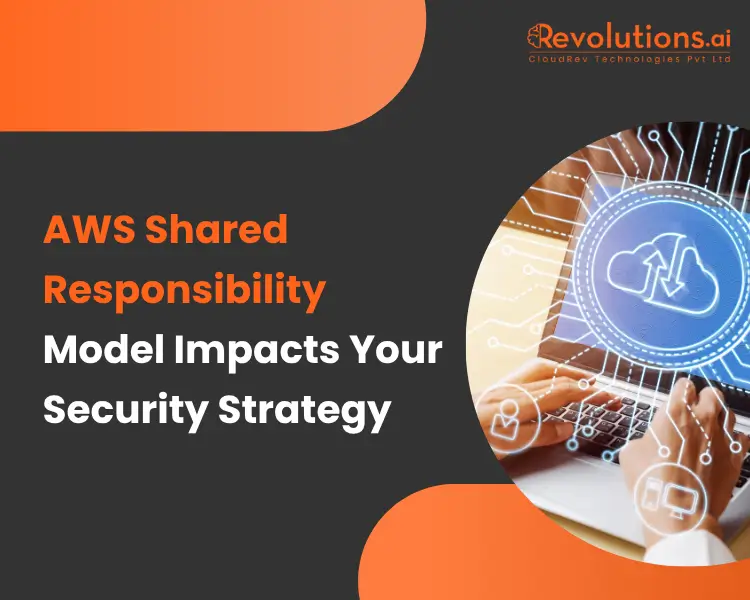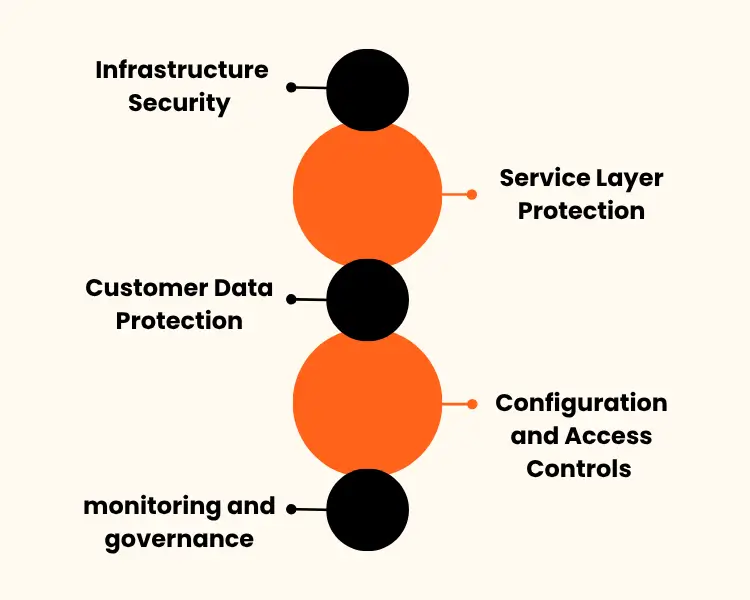Have you ever realised how shifting to the cloud feels like handing over your security keys to someone else? And this just sounds safe, right? But, AWS is not here for just protecting your data and applications. That’s your job and responsibility, it can only protect the overall infrastructure.
But, don’t worry! AWS shared responsibility model fuels your security practices. This is your smart cloud security strategy for better protection with shared responsibilities. This is your ultimate saviour in times of any data breach attacks.
In this blog, we will discover how the AWS based shared responsibility model keeps up with the cloud environments and provide us with stronger security solutions.
Why is the AWS Shared Responsibility Model So Important For Businesses?
Well, when the business shifts onto cloud services, they feel relieved from all the security aspects. And, to compliment that, AWS does offer premium security from its end to you. But, that’s not how the world works, your applications and data cannot hold the same hand to feel secure.
That’s where the shared responsibility model of AWS enters to clearly define the boundaries and differentiate security practices between AWS and you. AWS safeguards your servers and networks whereas everything else that you get afterwards are your responsibility. This provides your businesses with flexibility as well as accountability.
Moreover, by integrating this shared responsibility model, businesses can improve their security practices effectively. You and your system can together work towards better security strategies for your business. Since, cyber security is the need of today, you can’t wait for this integration till tomorrow.
What Does the AWS Shared Responsibility Model Include?
Honestly, the shared responsibility model in the cloud distributes the security work between AWS and the user efficiently. You can understand it clearly here:
1. Infrastructure Security
This is clearly AWS’s Job, here it deals with providing reliability to you by checking on physical security, hardware and proper working of networks.
2. Service Layer Protection
This is again AWS’s work to secure services such as computing, storing and protecting databases at a standard level. This also looks after the security of virtual reality related services.
3. Customer Data Protection
As a user, you need to be accountable for your data and its encryption. You cannot manage to risk it by mistakenly exposing it to data scammers. It is your call to decide how to deal with your data.
4. Configuration and Access Controls
You need to be careful with configurations such as RDS and managing permissions for certain accesses. You can use security options like multi-factor authentication, email syncing, etc.
5. Monitoring and Governance
You and AWS together, can work towards secure monitoring. You can use the tools offered by AWS such as CloudTrail and Security Hub for monitoring.
How does the AWS Responsibility Model Influence Your Security Strategy?
Well, the AWS shared security model empowers businesses to go for a better and protective security approach. It already covers you with multiple security practices and manages your infrastructure. As an organization, you just need to focus on your data and applications.
Furthermore, since most security failures are because the customers couldn’t keep the data structures safe, risk management is crucial. And, because of this, you require strengthened security strategies that work along with AWS shared responsibility model. Here, you can together build a system which monitors the potent risk.
Lastly, security is not a static setup, it is dynamic in nature and keeps evolving with new features and services. Your secure strategies should be able to cope up with that as well with regular checks, monitoring and training. This model could bring a new benchmark to cloud security and for a more secure digital future.
What are the Risks of Misunderstanding the AWS Shared Security Model?
To be honest, the AWS responsibility model might seem to be perfect and the need of the hour from far. But, wrong assumptions, expectations and perceptions towards it can risk the whole model. One of them is that it can handle everything and that’s why businesses started loading their workloads in the hope of automated security.
Furthermore, AWS does offer you compliant infrastructure but properly managing it is still in your hands. You need to work on your side towards keeping the regulatory guidelines on check by encrypting and auditing properly. You can never skip these responsibilities because even a minor error can lead to severe data breaches.
Lastly, you need to properly understand and analyze this model according to your certain needs. Businesses often end up searching for protection services everywhere which are already offered by AWS. Well, Security assurance should matter but only when it’s by both sides.
What Must Companies Do on Their End to Avoid Risks in AWS?
Well, to get the most benefits from the shared security model of AWS, it’s important to do your part with no excuse. This is what companies are doing in order to avoid risks in AWS:
- Define responsibilities – Clear the myths and state precisely the functions and responsibilities of both AWS and users.
- Strengthen Identity (IAM) – Switch on your multi-factor authentication and ensure that you share the least required information on other websites.
- Encrypt sensitive data – Encrypt your data so that it goes unrecognizable by other unauthorized parties.
- Automate monitoring and alerts – Make the best use of AWS provided tools such as CloudTrail and Security Hub for monitoring any kind of data breach or risk.
- Invest in employee training – Make sure that your teams and employees are well aware of the responsibilities and the role of this model in cloud security.
Conclusion
The AWS Shared Responsibility Model puts a protection spell on our security nightmare. AWS works towards providing us with secure and well protected cloud infrastructures and in return it becomes our responsibility to play our role effectively. So, AWS does protect the whole system but the real access is still in our hands.
At Revolutions AI, we provide expert AWS services for ensuring the integration of secure and ethical shared responsibility models in your businesses. Contact us for accessing these security solutions.
Frequently Asked Questions
AWS secures the infrastructure, but customers are responsible for protecting their data. This includes encryption, access control, and proper configuration of services.
No. AWS provides a compliant infrastructure, but it’s up to you to configure services, manage data, and implement controls in a way that meets your regulatory obligations.
“Security of the cloud” refers to AWS managing the infrastructure, hardware, and physical data centers. “Security in the cloud” refers to customer responsibilities like securing applications, workloads, and user access.
No. AWS offers tools like AWS Config, GuardDuty, and Security Hub to help detect misconfigurations, but it’s the customer’s responsibility to properly configure services and monitor them.
The core principle is the same, but the level of customer responsibility can vary by service. For example, with Infrastructure-as-a-Service (IaaS) like EC2, you manage more layers (OS, apps), while with managed services like S3 or RDS, AWS takes on more responsibility.

Hemal Sehgal
Introducing Hemal Sehgal, a talented and accomplished author with a passion for content writing and a specialization in the blockchain industry. With over two years of experience, Hemal Sehgal has established a strong foothold in the writing world, c...read more




